Already at the end of the 18th century, it was obvious even in the highest circles that something had to be done with the 120-hectare swamp that once lay on the site of today's City Park, which was still considered the outskirts of the city. Maria Theresa already ordered its afforestation, but these trees were eaten by the oxen that grazed here. Joseph II already acted more strictly, he insisted that the area be sorted out and that the regulations be followed, according to which grazing is prohibited in the wooded area, the swamp should be drained and afforested, and in this, he had a good partner in his confidant and unconditional supporter, Mayor Tóbiás Lechner. Thus, some kind of work began, in the framework of which mulberry trees and acacia trees were planted, and a walking path was also created.
In the area covered with more and more trees, and therefore already called the City Forest, Pest wanted to create a landscaped rest and recreation area with restaurants and other entertainment venues, at the suggestion of town judge János Boráros. He concluded a deal with Archbishop József Batthyány, which seemed advantageous at the time, for the implementation and operation. In 1794, the prince-primate leased the area for 24 years, but he did not have to pay rent but instead had to organise the area and create and operate the entertainment venue, and the city undertook to pay for the buildings built up at the end of the lease.
On behalf of the Archbishop, a huge work began, the waters were regulated, as a result of which a lake and two islands were formed instead of the swamp. However, József Batthyány died unexpectedly in 1799, and his heir, Tódor Batthyány, did not continue the regulatory works, so the city took the area back in 1805.
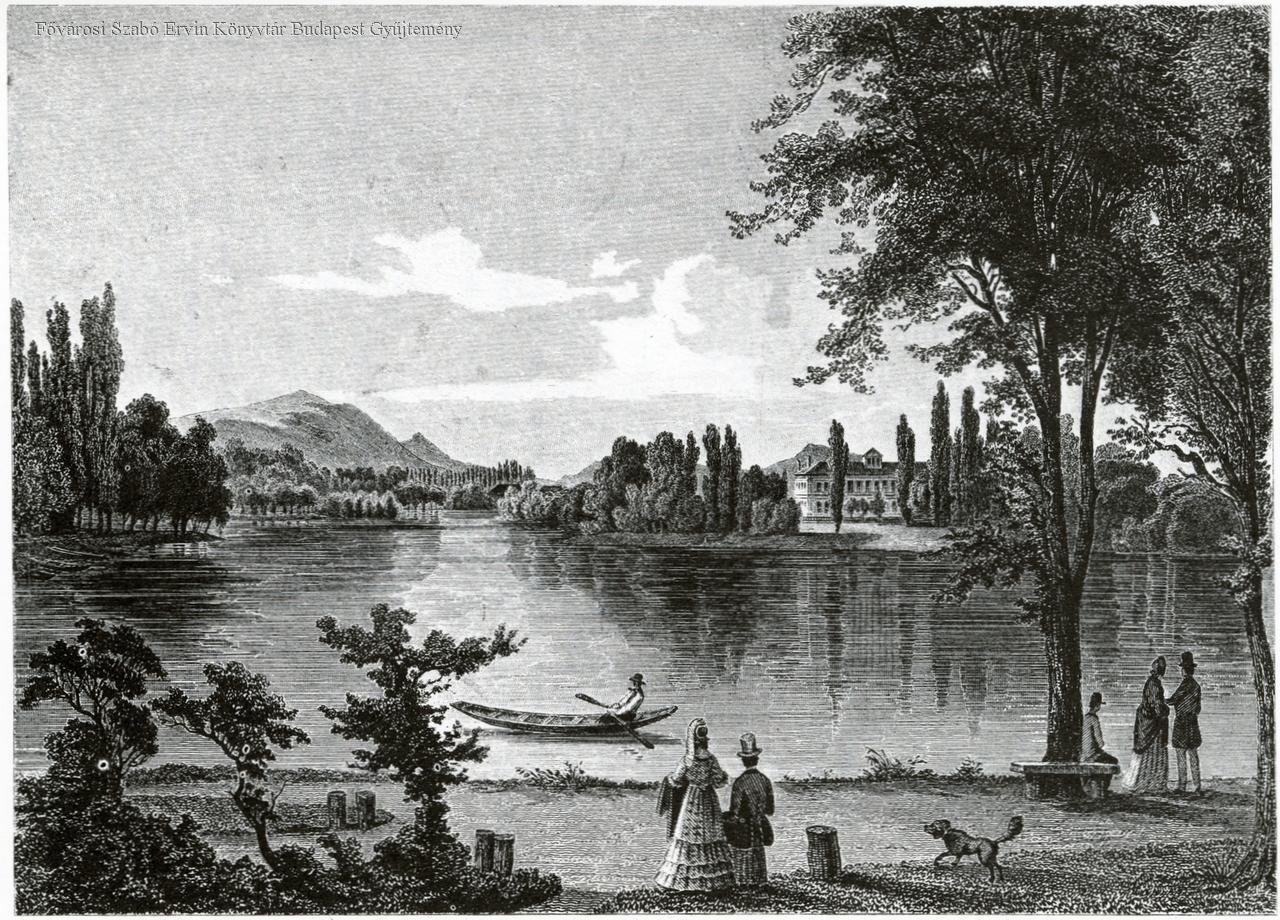
Ludwig Rohbock's 1856 drawing of the City Park (Source: FSZEK Budapest Collection)
The big change in the life of the City Park was the activity of Palatine Joseph, after many semi-successful but always restarted works, because the Beautification Committee, created by him in 1808, also planned the final arrangement of the City Park. In 1813, a tender was called for the all-encompassing arrangement plan. The winner was gardener Christian Heinrich Nebbien from Lübeck who was already known for his other works here, who designed a self-sustaining community garden. That is, a park that is open to everyone and can cover the majority of the maintenance costs.
According to the plans, the area would not have been a dense forest, but a kind of park, where, as it actually is today, significant grassy areas were planned to be created, and one of the sources of revenue would have come, for example, from the sale of the hay growing here, but also from rental fees for entertainment venues. Nebbien did very serious preparatory work, he worked on the plans for three years, while he studied the soil in the City Park and the native plants, and he prepared his draft taking these into account.
The execution of Nebbien's plan began in 1817. But there was hardly any money, so on 14 January 1818, the city of Pest appealed to the general public, calling for those who had the means to donate. As a result of the donation, 45,000 HUF was collected by the end of the year, among the donors were Palatine Joseph and 26 other lords living in Pest.
45,000 forints seems like a lot - let us not forget that seven years later the annual income of István Széchenyi, one of the richest Hungarian lords, became nationally known, it amounted to 60,000 forints - but it dwarfed the total costs of the Nebbien Plan, because - if it is implemented completely, in every detail - 691,000 HUF would have been needed, even though Nebbien's company offered to manage the construction practically for free, and even offered the field fee, 200 gold, to cover the work.
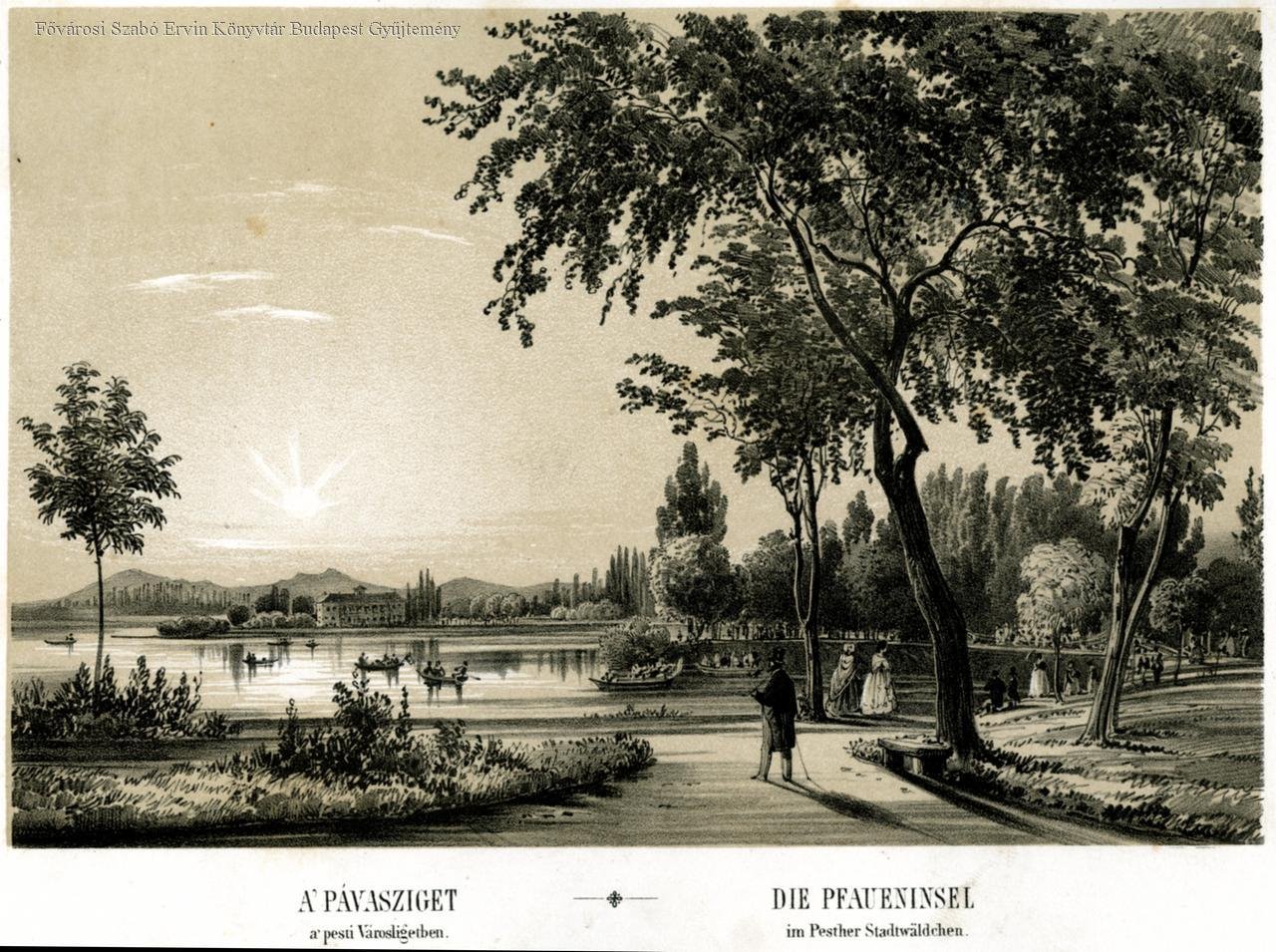
The Peacock Island in 1845 on the work of Rudolf Alt (Source: FSZEK Budapest Collection)
Therefore, the plans were streamlined and finally reduced to 300,000 HUF. In any case, the constructions started, new roads and bridges - the small suspension bridge leading to Peacock Island, the Wire Bridge - were built, a model manor farm was also established on Peacock Island, and rows of trees were created. A significant part of the trees was given by Palatine Joseph from his castle in Alcsút, and they were also grown locally in the City Park area because in 1817 a separate nursery garden was established for the park's trees. It is interesting that when a very harsh winter hit the city in 1830, Palatine Joseph cut down the row of trees leading to the City Park to provide firewood for the poor. Of course, he took care of replacing the trees in the following years.
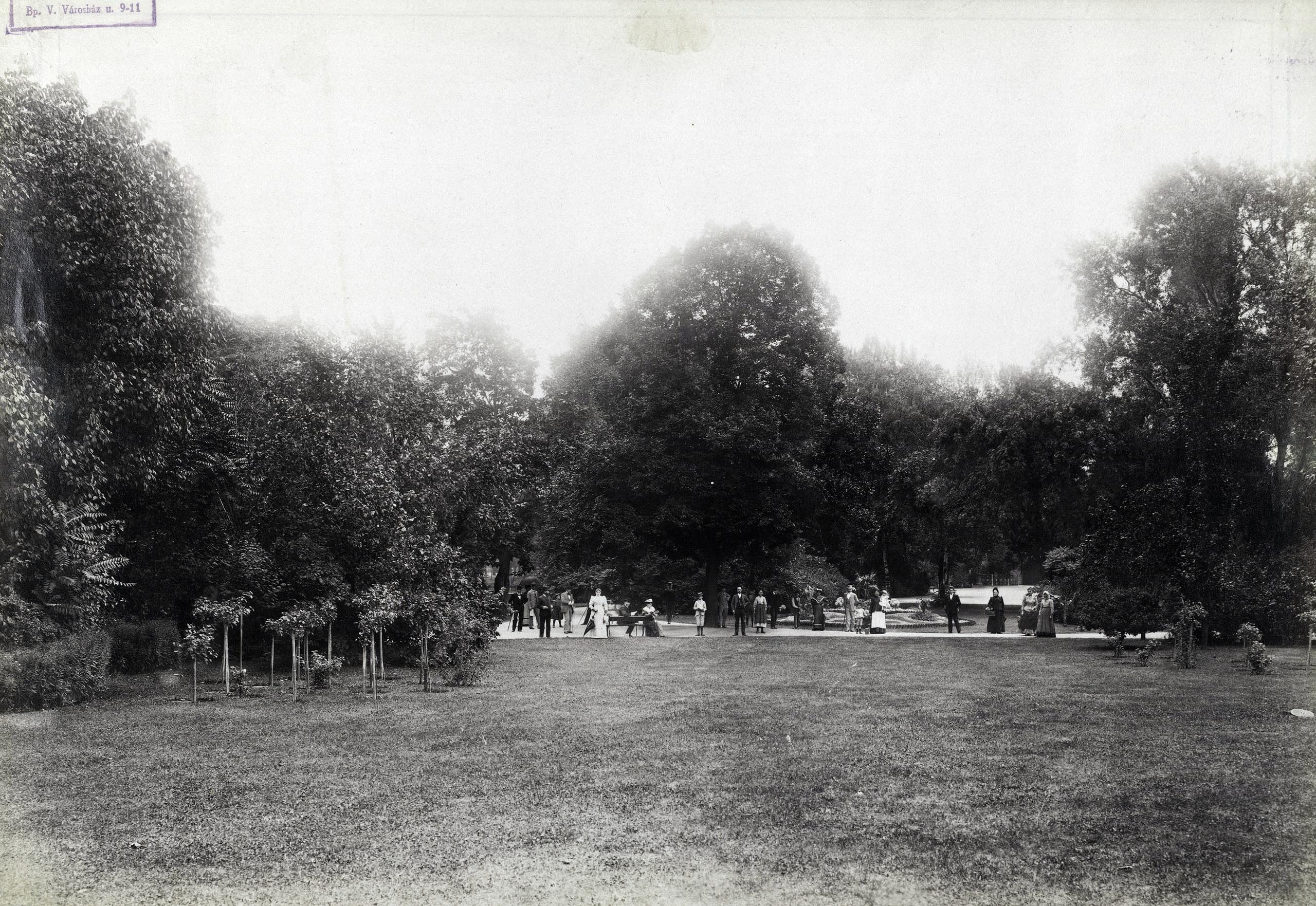
The design of the people's garden was made by Christian Heinrich Nebbien (Photo: Fortepan/Budapest Archives, Reference No.: HU.BFL.XV.19.d.1.07.072)
The engine of the works was, of course, the Beautification Committee, the results of which, regarding the City Park, were summarised as follows in 1832 in the 23 May issue of Hazai's Külföldi Tudósítások.
"The Committee responsible for the beautification of the Royal City of Pest does not stop working with full force on the bright path set for it. […] Not satisfied with the fact that they had the lake cleared at great expense to beautify the so-called City Forest; they raised mounds, filled roads, and planted groves of both native and naturalised trees and bushes, which provided pleasant occupations, provided food in the sad past year, and gave clean air instead of closed walls to its poorer residents."
In other respects, not long after the publication of the above lines, in July 1832, the first omnibus service started in Pest, one of the termini of which was City Park.
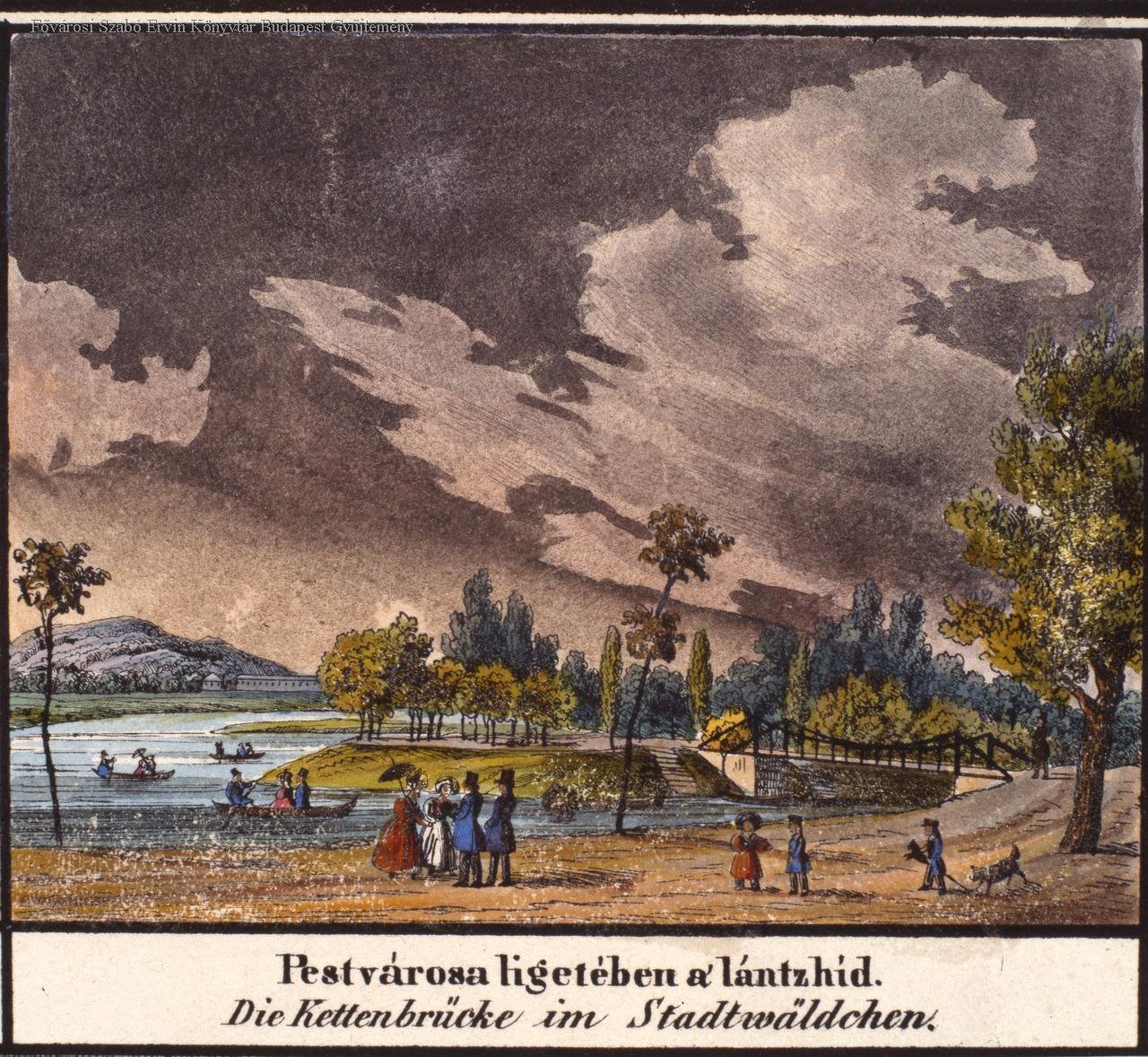
The small suspension bridge, which, contrary to the text in the picture, was actually not a chain bridge, but a cable bridge. Drawing by Vasquez (Source: FSZEK Budapest Collection)
This is how the City Park turned from a swamp on the edge of the city into a park. Although the necessary money was not collected as a result of the call in 1818, the persistent work of the following decades still bore fruit. On 1 July 1860, the Vasárnapi Ujság wrote the following about the former swamp:
"The most beautiful sight in the City Park is the lake, which, after being completely dry for a couple of years, is now filled with water again, and the Peacock Island formed by it. The lake has a small harbour, where countless iron and wooden boats, among them real dinghies, offer themselves as a means of amusement for dilettante rowers, and in the evening, a small fleet often swarms on the surface of the lake, populated with ladies having a good time and men shovelling. A pretty villa rises from Peacock Island, where a restaurant has pitched its tent, and a small chain bridge leads to another neighbouring island. Let us add the groups of trees with lush foliage and the Buda mountains in the far background — a truly enchanting image, which is always difficult to part with."
Cover photo: Lake of City Park (Photo: Fortepan/Budapest Archives, Reference No.: HU.BFL.XV.19.d.1.07.072)

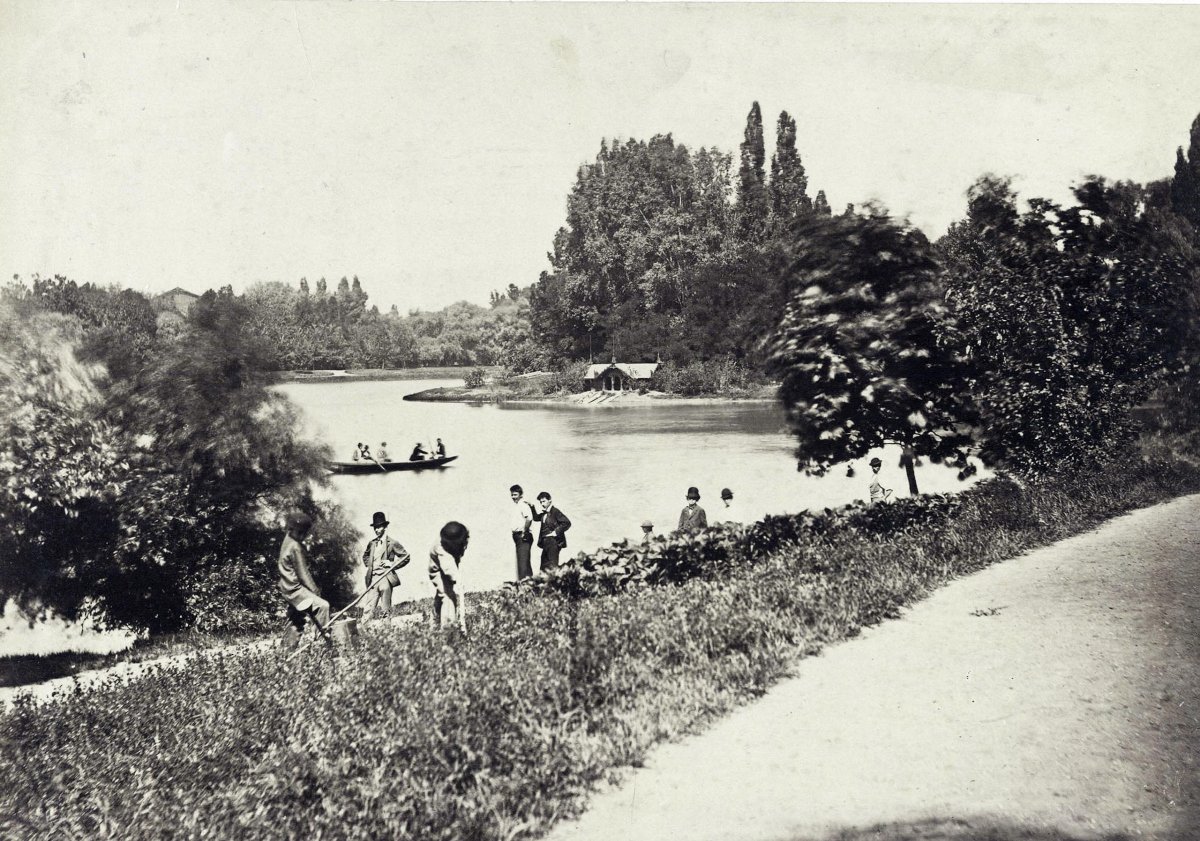


































Hozzászólások
Log in or register to comment!
Login Registration